Follow our simple instructions to draw a cartoon T. rex and read on to find out how professional artists bring dinosaurs to life with their pictures.
Tyrannosaurus rex is probably the most famous dinosaur that ever lived, capturing our imagination with its fearsome face, terrifying teeth and comically small arms.
The video above shows how to draw a cartoon T. rex. Written instructions can be found below.
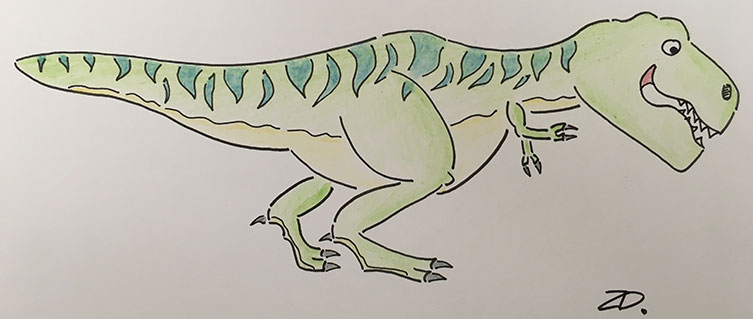
This T. rex was drawn by Museum scientist Zach Dickeson. Learn to draw your own by following our step-by-step guide.
How to draw a T. rex
You will need:
- paper
- a pencil
- a rubber
- two pens, one with a fine tip
- colouring pencils
1. In pencil, draw a triangle, a circle and a rectangle. You might find it helpful to use our shapes template PDF (189KB) as a guide.
2. Draw a zigzag line, starting near the centre of the circle. At the bottom add a small rectangle.
3. Use the thicker pen to outline your T. rex, beginning with its back. Starting at the tip of the triangle, draw a slightly wavy line along one side of the triangle and up the circle. Draw another curved line that slightly dips down the other side of the circle and then goes up towards the rectangle.
4. For the head, use the rectangle as a guide but round the corners, add a bump above where the eye will be and leave a gap for the mouth.
5. Add a curvy mouth, with matching top and bottom lines.
6. Using the zigzag and rectangle as a guide, draw a leg and foot. Start by drawing a backwards ‘C’ inside the circle. Add a small ‘C’ at the corner of the zigzag. Follow the zigzag down to add the bottom part of the leg, and add toes at the rectangle.
7. For the back of the leg, draw a short ‘C’ at the top of the other side of the zigzag, then a wide ‘C’ down to the next corner of the zigzag. Finish the bottom of the foot with another backwards ‘C’ and a horizontal line.
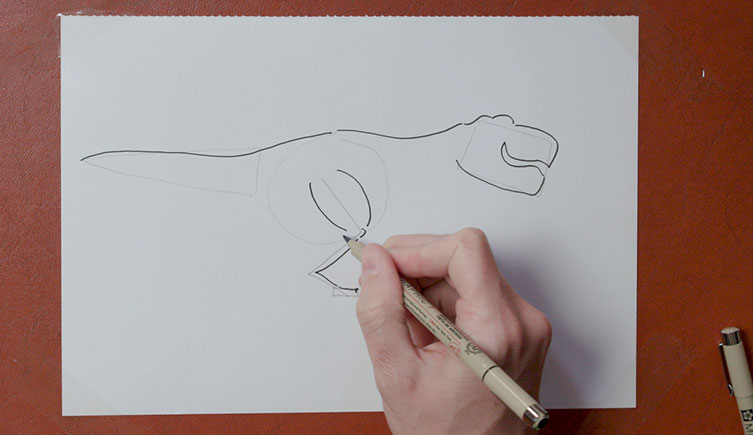
Drawing the leg
8. Starting at the tip of the triangle, draw a slightly wavy line along the bottom of the triangle. Stop this line before it gets to the circle. You’ve now finished the tail.
9. Start a new curved line that goes around the outside of the circle on either side of the leg. This will be the belly.
10. Between the circle and the rectangle draw a very small arm. Use two curved lines for the upper arm, two straighter lines for the lower arm and a small ‘C’ where the arm bends. Put two fingers on the end.
11. Draw a short line between the arm and the head. This will be the neck.
12. Add a second arm and leg for the other side. Remember: the top of this second leg and arm will be hidden by the dinosaur’s body.
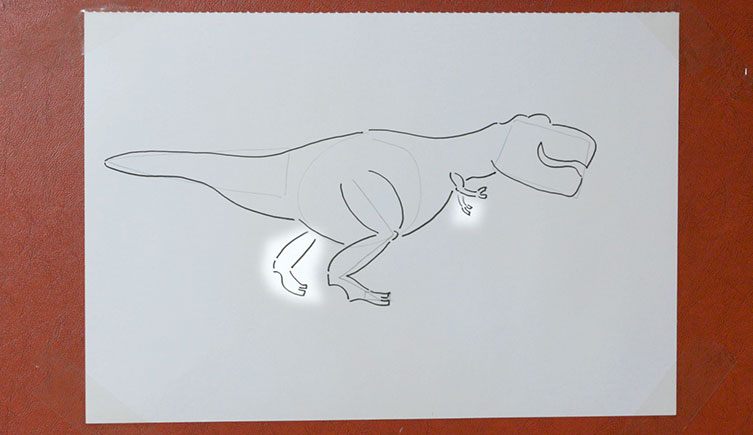
The second leg and arm are only partly visible, as highlighted in this drawing
13. Carefully erase all of the pencil lines.
14. Use a thinner pen to draw an eye, nostril and pointy teeth. Add a small black circle in the eye.
15. With the same pen, add claws to the fingers and toes.
16. Add markings on the back – stripes, spots, any pattern you like – and a thin line starting near the end of the tail to show where the soft under belly is.
17. Colour in your drawing.
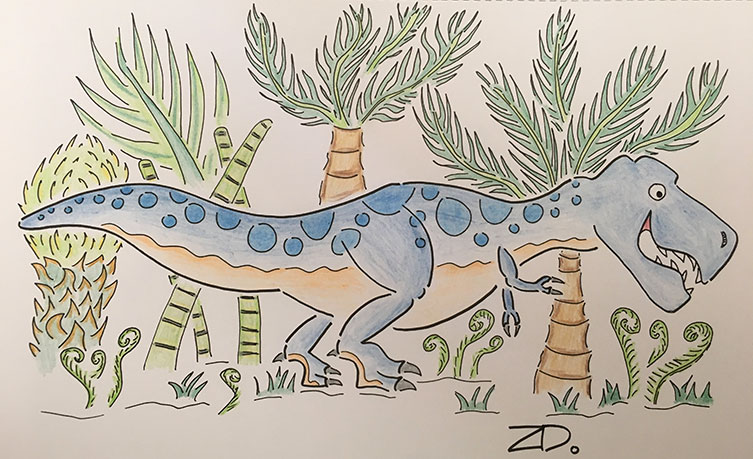
Once you have finished your T. rex, you could go further and add a background like Zach has done here. He has set his dinosaur among prehistoric plants.
Top T. rex drawing tips from our artist
The creator of the cartoon T. rex in the video is Natural History Museum scientist Zach Dickeson. You can see more of his artwork on X @ZachDickeson. He has these tips for budding artists:
- A big, chunky head with a ridge above the eye is what really makes this drawing look like T. rex.
- Another key feature is the way the legs bend like a zigzag.
- If possible, use two different size pens. A thick outline makes the shape of the dinosaur stand out more. Use a thinner pen to draw the teeth, add the claws and fill in the details of the face and pattern. It makes them clearer.
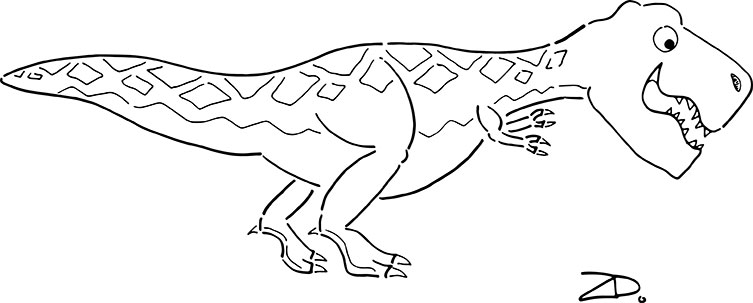
Drawing the dinosaur’s outline with a thicker pen helps it to stand out
How to give your dinosaur character
“There are a few things to think about,” says Zach.
Do you want your T. rex to be fierce or smiley?
“Go up at the corner of the mouth to make it look smiley,” says Zach. “If you make your dinosaur’s eye small, it looks really mean. An oval shape helps it look meaner too.”
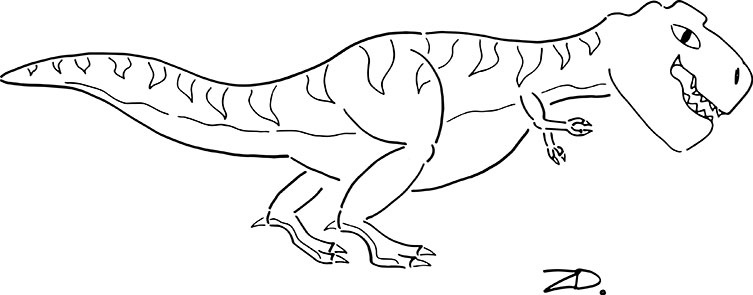
Once you’ve mastered the body of the T. rex, you can add unique details and give your dinosaur its own character. This T. rex looks meaner than the one above thanks to the oval-shaped eyes.
Where is your dinosaur looking? Forwards, backwards, upwards or at you (gulp!)? Where you put the black circle inside the eye will change which direction the dinosaur seems to be looking in.
Do you want your dinosaur to have its mouth shut, or open to show off its terrible teeth?
“Teeth are really fun to draw. Why not try drawing them slightly wonky? It makes the dinosaur look a bit goofy,” says Zach.
Zach also has other tips on how to make your picture extra interesting.
“Colour does a huge amount,” says Zach. “You could also add a background, setting your dinosaur wherever you’d like it to be. Or you could even draw yourself next to it.”
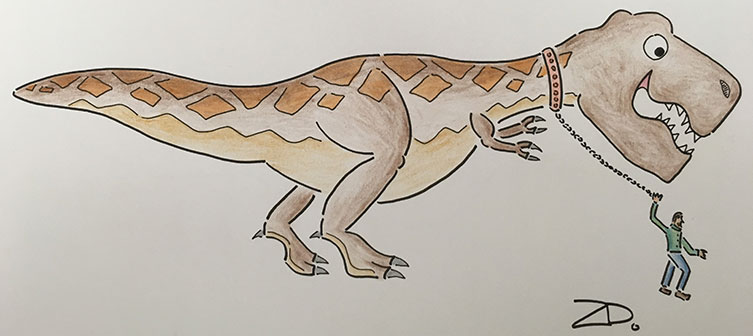
Have fun with your drawing. The tips above will help it to be recognised as T. rex, but you don’t have to make an exact copy of Zach’s cartoon. It’s interesting when it turns out slightly different each time. Why not experiment with your dinosaur’s expression, pattern or even put yourself in the drawing?
Bringing dinosaurs to life through palaeoart
Above we’ve shown you how to draw a simple, cartoon dinosaur. But art can also help us imagine what long-extinct animals looked like.
People who draw lifelike pictures of dinosaurs or other prehistoric animals are called palaeoartists.
How do they draw realistic pictures of an animal no one has ever seen alive?
Dinosaur researcher Professor Paul Barrett, who has worked with a number of palaeoartists, talks us through the process.
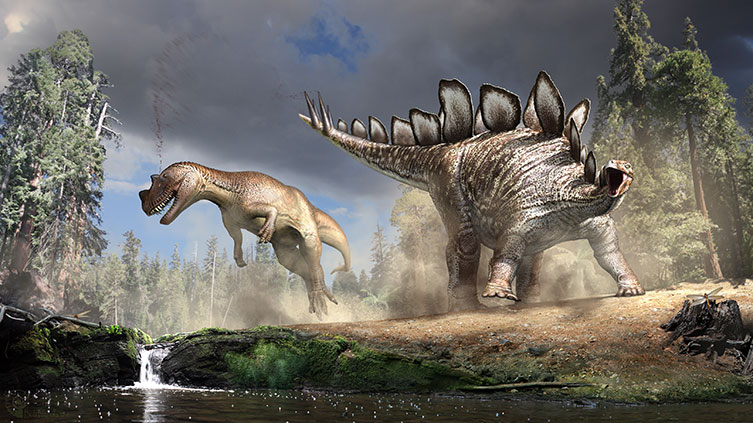
When one of the world’s most complete Stegosaurus joined the Natural History Museum’s dinosaur collection, Professor Paul Barrett worked with palaeoartist Robert Nicholls to create artwork that showed what this animal would have looked like in its natural environment. © NHM London/Nicholls (paleocreations.com) 2014
Step 1: Begin with the bones
To work out what a dinosaur looked like, palaeoartists start with the fossils that have been found. They fit the bones together in the right positions in their drawing with the help of dinosaur experts.
Complete skeletons are rare, so it’s like putting together a jigsaw that has missing and broken pieces. The more bones there are, the more accurate the reconstruction will be.
Comparing the skeletons of closely related dinosaurs can help fill in gaps. And if the left leg bones are missing, for example, a mirror image of the right leg is a good substitute.
Step 2: Next come the muscles
Adding muscles helps give the dinosaur a more realistic shape.
Rough patches on fossil bones sometimes show where the muscles attached. We also know that dinosaurs had the same basic body plan as modern birds, crocodiles and lizards.
Step 3: Add the outsides
Occasionally a fossil shows what kind of skin a dinosaur had. We know that dinosaurs had scales like those on crocodile legs, with lots of bumps of different sizes.
Some of the best fossils have been found in China. They have lots of detail on them, because the fossils sank into fine-grained mud. All the small, meat-eating dinosaurs found there show more than just scales on their outsides. Some, including Sinosauropteryx, had a fluffy covering over part of their body. Others, like Caudipteryx and Microraptor, had feathers.
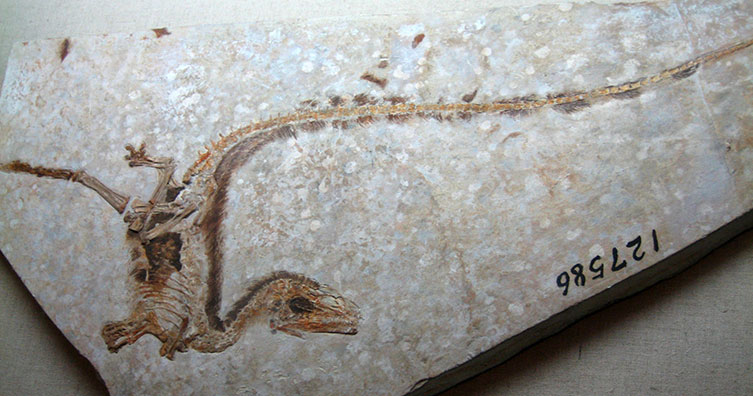
The discovery in 2012 of a 1.4 tonne tyrannosaur Yutyrannus suggests even some of the big meat-eating dinosaurs had feathers. Some scientists think T. rex may also have had feathers. Others disagree. The hunt for fossil evidence continues.
Step 4: Colour it in
Palaeoartists complete their picture by colouring it in.
Fossils do not usually preserve the colour of dinosaurs or their markings. So palaeoartists use clues from animals alive today, particularly birds – dinosaurs’ closest living relatives, and animals that are reptiles like dinosaurs, such as crocodiles and lizards.
An artists’ impression
Palaeoartists base their work on the evidence available at the time. This is why different pictures of the same dinosaur can look quite different.
Did you know?
Iguanodon was the first plant-eating dinosaur ever discovered. It has a large thumb spike on its hand. When early reconstructions were prepared, people thought this cone-shaped bone was a horn and placed it on the end of its nose. It was only when more complete specimens were discovered that they realised their mistake.
Take a look at some pictures from the 1960s that we now know aren’t quite right.
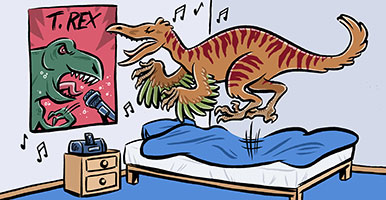
Dino fun
Enjoy more dinosaur facts, quizzes and crafts.
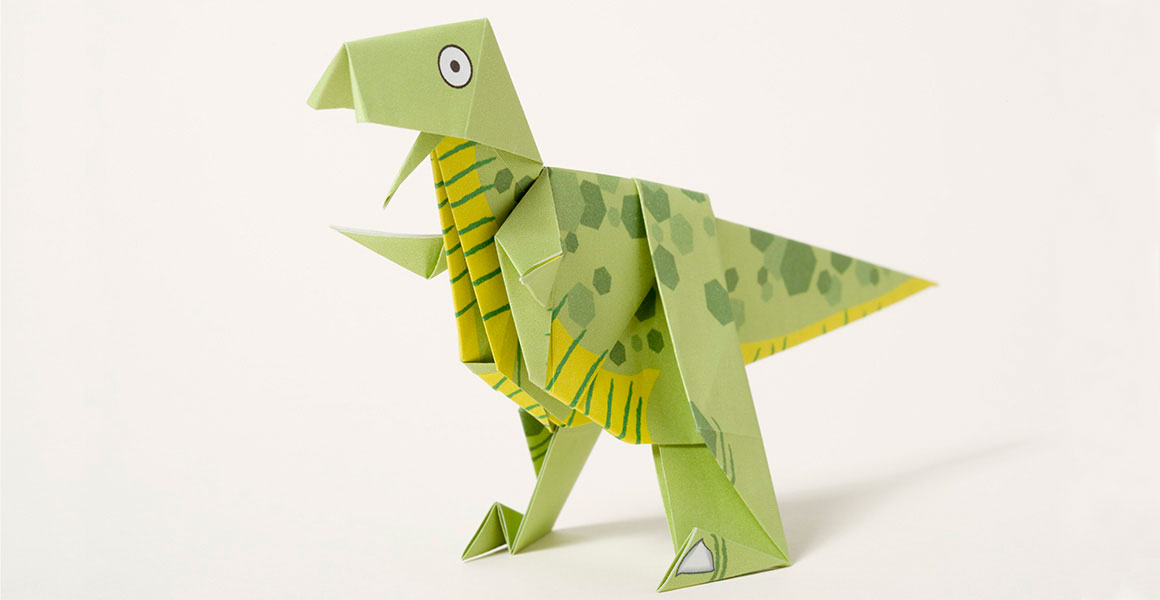



Don't miss a thing
Receive email updates about our news, science, exhibitions, events, products, services and fundraising activities. We may occasionally include third-party content from our corporate partners and other museums. We will not share your personal details with these third parties. You must be over the age of 13. Privacy notice.
Follow us on social media